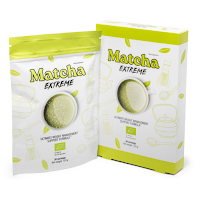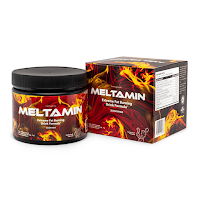Artistry in a Cup: The Ritual of Preparing and Enjoying Matcha Extreme
Introduction:
Matcha Extreme, a premium grade of powdered green tea, is not just a beverage—it's an art form. Steeped in centuries of tradition and culture, the preparation and enjoyment of Matcha Extreme involve a ritualistic process that engages all the senses and invites a moment of mindfulness and appreciation. This article delves into the artistry of Matcha Extreme, exploring the rituals, techniques, and cultural significance behind its preparation and enjoyment.
Understanding Matcha Extreme:
Matcha Extreme is derived from shade-grown tea leaves that are finely ground into a vibrant green powder, resulting in a concentrated source of antioxidants, vitamins, and amino acids. Unlike traditional steeped tea, matcha is consumed in its entirety, allowing for maximum absorption of its beneficial compounds. With its smooth texture and robust flavor, Matcha Extreme has become synonymous with quality, purity, and excellence in the world of tea.
The Ritual of Matcha Preparation:
The preparation of Matcha Extreme is steeped in tradition and symbolism, with each step carefully executed to achieve the perfect balance of flavor, texture, and aroma. The ritual of Matcha preparation involves several key elements:
Selection of Tools: The preparation of Matcha Extreme requires specialized tools, including a bamboo whisk (chasen), a ceramic bowl (chawan), a bamboo scoop (chashaku), and a fine-mesh sieve (furui). These tools are meticulously crafted and chosen for their functionality, beauty, and cultural significance.
YOU MAY LIKE THIS
Can acupuncture help with anxiety and depression?
****************************************************
99 WALKS DEALS
****************************************************
Measuring and Sifting: To ensure a smooth and lump-free texture, Matcha Extreme is measured and sifted using a bamboo scoop and fine-mesh sieve. This process helps break up any clumps and ensures even distribution of the powder, resulting in a velvety smooth consistency.
Whisking Technique: Whisking is perhaps the most iconic and essential step in the preparation of Matcha Extreme. Using a bamboo whisk, the powdered tea is gently whisked in a zigzag motion until frothy and well-incorporated. This technique aerates the tea and creates a creamy texture, enhancing the flavor and mouthfeel of the beverage.
Water Temperature: The temperature of the water used to prepare Matcha Extreme is crucial for achieving the perfect flavor and consistency. Traditionally, water is heated to around 175°F (80°C) and then poured over the powdered tea in the chawan. The use of hot water helps dissolve the tea powder and extract its full flavor profile.
Mindful Preparation: The preparation of Matcha Extreme is not just about technique—it's also about mindfulness and presence. Each step of the process is performed with intention and care, fostering a sense of connection and appreciation for the tea and its cultural heritage.
The Art of Matcha Presentation:
Once prepared, Matcha Extreme is presented with elegance and grace, reflecting the beauty and tradition of Japanese tea culture. The presentation of Matcha involves several key elements:
Chawan: The ceramic bowl used to serve Matcha Extreme, known as a chawan, is chosen for its shape, size, and aesthetic appeal. Chawans come in a variety of styles and designs, ranging from rustic and traditional to modern and minimalist.
Chasen: The bamboo whisk used to whisk Matcha Extreme, known as a chasen, is an essential part of the presentation. The delicate yet functional design of the chasen reflects the craftsmanship and attention to detail that goes into the preparation of Matcha Extreme.
Placement: When serving Matcha Extreme, the chawan is placed on a wooden tray or lacquered stand, known as a chabako or chadansu. This elevated presentation adds a sense of ceremony and reverence to the ritual of enjoying Matcha Extreme.
Meltamin
Garnishes: To enhance the visual appeal of Matcha Extreme, it is often garnished with a sprinkle of matcha powder, a dusting of powdered sugar, or a single cherry blossom (sakura) floating on the surface. These delicate touches add a pop of color and elegance to the presentation of Matcha Extreme.
Gesture of Respect: When receiving a bowl of Matcha Extreme, it is customary to express gratitude and respect to the host by bowing slightly and complimenting the tea. This gesture acknowledges the effort and care that went into preparing the Matcha Extreme and honors the spirit of hospitality and friendship.
The Sensory Experience of Enjoying Matcha Extreme:
The enjoyment of Matcha Extreme is a multi-sensory experience that engages all the senses and fosters a moment of tranquility and appreciation. From the aroma of the tea to the texture of the froth, each aspect of Matcha Extreme contributes to its sensory appeal:
Aroma: The aroma of Matcha Extreme is earthy, grassy, and slightly sweet, with hints of umami and vegetal notes. The scent of Matcha Extreme evokes a sense of calmness and connection to nature, inviting the drinker to savor each sip mindfully.
Color: The vibrant green color of Matcha Extreme is visually striking and symbolic of its freshness, purity, and vitality. The rich hue of Matcha Extreme reflects the vibrant green color of the tea leaves and is often associated with health, wellness, and renewal.
Texture: The texture of Matcha Extreme is smooth, creamy, and velvety, with a frothy layer of foam on top. The creamy texture of Matcha Extreme coats the palate and lingers on the tongue, providing a luxurious and satisfying mouthfeel with each sip.
Taste: The flavor of Matcha Extreme is complex and nuanced, with layers of sweetness, bitterness, and umami. The initial taste is slightly bitter and vegetal, followed by a sweet and lingering finish that leaves a pleasant aftertaste on the palate.
Sound: The sound of Matcha Extreme being whisked in the chawan is a gentle and rhythmic rustling, reminiscent of a calming breeze or flowing water. The soothing sound of the whisking process adds to the meditative quality of the Matcha Extreme ritual, creating a sense of tranquility and relaxation.
The Cultural Significance of Matcha Extreme:
Matcha Extreme holds a special place in Japanese culture and tradition, serving as a symbol of hospitality, respect, and harmony. The preparation and enjoyment of Matcha Extreme are deeply rooted in the principles of Zen Buddhism and the spirit of wabi-sabi, which emphasize simplicity, mindfulness, and appreciation of the present moment. The cultural significance of Matcha Extreme is reflected in various aspects of Japanese tea culture, including:
Matcha Extreme
 |
| Matcha Extreme is a modern food supplement for the preparation of a delicious tea. |
Tea Ceremonies: The Japanese tea ceremony, known as chanoyu or chado, is a formal ritualistic practice that celebrates the art of preparing and serving Matcha Extreme. Tea ceremonies are steeped in tradition and symbolism, with each gesture and movement carefully choreographed to create a sense of harmony and reverence.
Seasonal Celebrations: Matcha Extreme is often enjoyed during seasonal celebrations and special occasions, such as cherry blossom (sakura) viewing parties, autumn moon festivals, and New Year's gatherings. These festive occasions provide an opportunity for friends and family to come together and enjoy the beauty and flavor of Matcha Extreme in a communal setting.
Cultural Icons: Matcha Extreme has inspired numerous cultural icons and artistic expressions, including poetry, painting, and literature. The delicate flavor and vibrant color of Matcha Extreme have been celebrated in Japanese art and literature for centuries, serving as a source of inspiration for poets, artists, and philosophers alike.
Health and Wellness: In addition to its cultural significance, Matcha Extreme is valued for its health-promoting properties and nutritional richness. Matcha Extreme is believed to support overall health and well-being, providing a source of antioxidants, vitamins, and minerals that nourish the body and mind.
The Global Appeal of Matcha Extreme:
While Matcha Extreme has its roots in Japanese culture, its popularity has spread around the world, captivating tea enthusiasts and culinary aficionados alike. The global appeal of Matcha Extreme can be attributed to several factors:
Health and Wellness Trends: As consumers become more health-conscious and mindful of their dietary choices, the demand for functional foods and beverages like Matcha Extreme has grown. Matcha Extreme is valued for its nutritional richness and antioxidant properties, making it a popular choice for health-conscious consumers seeking natural and holistic solutions to support their well-being.
Culinary Innovation: Matcha Extreme's versatility and vibrant color have inspired chefs and mixologists to experiment with innovative recipes and culinary creations. From matcha lattes and smoothies to matcha-infused desserts and savory dishes, the culinary possibilities with Matcha Extreme are endless, providing endless opportunities for creativity and expression.
Social Media Influence: The visual appeal of Matcha Extreme, with its vibrant green color and frothy texture, has made it a popular subject on social media platforms like Instagram and Pinterest. Influencers and food bloggers often showcase their Matcha Extreme creations, sparking interest and curiosity among their followers and inspiring them to incorporate Matcha Extreme into their own daily routines.
Cultural Exchange: The global popularity of Matcha Extreme has led to a cultural exchange and appreciation for Japanese tea culture and traditions. Tea enthusiasts from around the world travel to Japan to experience authentic tea ceremonies and learn about the art of preparing and enjoying Matcha Extreme firsthand, fostering a sense of connection and appreciation for Japanese culture and heritage.
RECOMMENDED POST
Silvets Weight Loss
Conclusion:
Matcha Extreme is more than just a beverage—it's an art form that engages the senses, nourishes the body, and enriches the spirit. From the ritualistic preparation to the mindful enjoyment, every aspect of Matcha Extreme reflects a deep appreciation for tradition, craftsmanship, and culture. Whether enjoyed in the tranquility of a Japanese tea garden or the bustling energy of a modern café, Matcha Extreme offers a moment of respite and connection in an increasingly busy and chaotic world. So next time you sip a bowl of Matcha Extreme, take a moment to savor the experience and appreciate the artistry in every cup.
 |
ARTICLE RELATED TO :-
The ritual of preparing and enjoying matcha extreme wikipedia, matcha tea ceremony steps, tea ceremony wedding, chanoyu, tea ceremonies around the world, matcha tea ceremony set, matcha ceremony, chanoyu meaning
ALSO READ THIS: The Journey of Matcha Extreme
 |
| Liv Pure Review: Does It Work for Weight Loss? Explore if Liv Pure Supplement effectively aids weight loss and is suitable for your needs. |
****************************************************
3BELIEVE DEALS
Healthy Nut Creamy Peanut Butter: A Nutritious Delight
Peanut butter, with its creamy texture and rich flavor, has been a beloved staple in many households for decades. It’s versatile, nutritious, and, when made right, a healthy addition to your diet. This article delves into the world of healthy nut creamy peanut butter, exploring its benefits, how to choose the best product, and even how to make your own at home.
The Nutritional Benefits of Peanut Butter
Peanut butter is not just delicious; it’s also packed with essential nutrients. Here are some of the key benefits:
High in Protein: Peanut butter is an excellent source of plant-based protein. A two-tablespoon serving typically contains about 7 grams of protein, which is crucial for muscle repair and growth.
Rich in Healthy Fats: It contains mostly unsaturated fats, which are heart-healthy fats. These fats help to reduce bad cholesterol levels, lowering the risk of heart disease.
Fiber Content: Peanut butter is a good source of dietary fiber, which aids in digestion and helps maintain a healthy weight.
Vitamins and Minerals: It’s rich in vitamins such as Vitamin E, which acts as an antioxidant, and B vitamins, which are essential for energy production. Minerals like magnesium, potassium, and zinc are also abundant in peanut butter, contributing to bone health, muscle function, and immune support.
Antioxidants: Peanuts contain antioxidants like resveratrol, which has been linked to various health benefits, including reduced inflammation and a lower risk of chronic diseases.
Choosing the Healthiest Peanut Butter
Not all peanut butters are created equal. Many commercial brands add sugar, hydrogenated oils, and other additives that can diminish the health benefits. Here’s what to look for when choosing the healthiest option:
Ingredients List: The best peanut butter should have a short and simple ingredients list, ideally just peanuts and maybe a pinch of salt. Avoid products with added sugars, oils, and preservatives.
Natural vs. Regular: Natural peanut butter usually has oil separation (a layer of oil on top), which is a sign that it doesn’t contain stabilizers. This is a good indication that it’s a healthier choice.
Organic Options: Choosing organic peanut butter ensures that the peanuts are grown without synthetic pesticides or fertilizers, which is better for your health and the environment.
No Added Sugars: Many brands add sugar to enhance the flavor. Look for options labeled "no sugar added" or check the nutritional information to ensure low sugar content.
Hydrogenated Oils: Avoid peanut butters that contain hydrogenated or partially hydrogenated oils, as these can contain trans fats, which are harmful to heart health.
Making Your Own Healthy Nut Creamy Peanut Butter
Making peanut butter at home is not only simple but also allows you to control the ingredients and ensure maximum health benefits. Here’s a step-by-step guide to making your own creamy peanut butter:
Ingredients:
2 cups of dry roasted peanuts (unsalted)
1-2 tablespoons of peanut oil (optional)
Salt to taste (optional)
Instructions:
Prepare the Peanuts: If you’re using raw peanuts, roast them in the oven at 350°F (175°C) for about 10 minutes, or until they are golden brown. Let them cool before processing.
Blend the Peanuts: Place the peanuts in a food processor. Start blending on a low setting, gradually increasing the speed. The peanuts will go through various stages – from chopped to a crumbly mixture, then to a thick paste, and finally to a creamy consistency. This process can take about 5-10 minutes.
Add Oil (if necessary): If the peanut butter is too thick, you can add a tablespoon of peanut oil to achieve a creamier consistency. However, this step is optional, as peanuts naturally contain oils.
Season to Taste: If you prefer salted peanut butter, add a pinch of salt and blend for a few more seconds. You can also add other flavorings like honey or cinnamon, but keep it minimal to maintain the health benefits.
Store Properly: Transfer the peanut butter to an airtight container and store it in the refrigerator. Homemade peanut butter can last for several weeks in the fridge.
Incorporating Peanut Butter into a Healthy Diet
Peanut butter is versatile and can be incorporated into a variety of meals and snacks. Here are some healthy ways to enjoy it:
Spread on Whole Grain Toast: A classic way to enjoy peanut butter is spreading it on whole grain toast. This makes for a quick and nutritious breakfast or snack.
Smoothies: Add a tablespoon of peanut butter to your smoothies for a protein boost and a creamy texture.
Dipping Fruit and Vegetables: Use peanut butter as a dip for apples, bananas, celery, or carrots. This combination provides a good mix of protein, healthy fats, and fiber.
Baking: Incorporate peanut butter into healthy baking recipes, such as peanut butter cookies made with whole grain flour and minimal sugar.
Overnight Oats: Mix peanut butter into overnight oats for a hearty and satisfying breakfast.
Peanut Sauce: Make a peanut sauce for savory dishes like stir-fries or noodle bowls. Combine peanut butter with soy sauce, lime juice, garlic, and a bit of water for a delicious dressing.
The Environmental Impact of Peanut Butter
Beyond its nutritional benefits, it’s important to consider the environmental impact of peanut butter production. Peanuts are a relatively sustainable crop:
Nitrogen Fixing: Peanuts have the ability to fix nitrogen in the soil, reducing the need for chemical fertilizers.
Water Efficiency: They require less water compared to other nuts like almonds, making them a more water-efficient choice.
Biodiversity: Growing peanuts can contribute to crop rotation practices, which are beneficial for soil health and biodiversity.
However, like any crop, the environmental impact can vary based on farming practices. Choosing organic peanut butter can help ensure that sustainable methods are used in its production.
Peanut Butter and Allergies
While peanut butter is nutritious for many, it’s important to acknowledge that peanuts are a common allergen. For those with peanut allergies, even a small amount can trigger severe reactions. Fortunately, there are alternatives available:
Other Nut Butters: Almond butter, cashew butter, and sunflower seed butter are excellent alternatives that offer similar nutritional benefits.
Hypoallergenic Options: Some companies produce peanut-free butters designed for those with severe allergies.
Conclusion
Healthy nut creamy peanut butter is a nutritious and delicious addition to any diet. By choosing natural, organic options or making your own at home, you can ensure you’re getting all the health benefits without unnecessary additives. Whether you spread it on toast, blend it into smoothies, or use it in cooking, peanut butter offers a versatile and nutrient-rich option for meals and snacks. Always be mindful of allergies and environmental impacts, and enjoy this beloved nut butter as part of a balanced diet.
3BELIEVE DEALS
****************************************************
FAQ
What is the name of the matcha ritual?
The matcha ritual, known as "chanoyu"or "sado" in Japanese, is a revered tradition deeply ingrained in Japanese culture. Derived from the profound philosophies of Zen Buddhism, this centuries-old ceremonial practice is more than just a method of preparing and consuming tea; it's a spiritual journey that embodies harmony, respect, and mindfulness.
"Chanoyu," which literally translates to "hot water for tea," reflects the meticulous attention to detail and reverence for simplicity that characterize the ritual. Each aspect of the ceremony, from the selection of utensils to the arrangement of the tea room, is carefully choreographed to create a harmonious and contemplative atmosphere.
The name "sado" carries a deeper meaning, with "sa" representing tranquility or serenity and "do" signifying a path or way of life. As such, "sado" encapsulates the broader philosophy underlying the tea ceremony, emphasizing the cultivation of inner peace, self-awareness, and spiritual enlightenment.
Central to the matcha ritual is the preparation and consumption of matcha, a finely ground powdered green tea. The process involves a series of precise and deliberate movements, known as "temae," performed by the host with grace and mindfulness. From purifying the utensils to whisking the matcha into a frothy consistency, each step in the ceremony is imbued with symbolic significance and imbues the ritual with a sense of reverence and solemnity.
Beyond its aesthetic and sensory appeal, the matcha ritual serves as a platform for social interaction, cultural exchange, and personal reflection. Participants gather in the intimate setting of the tea room to share in the experience, fostering a sense of connection and camaraderie. Through the act of drinking tea together, they transcend the boundaries of language and culture, uniting in a moment of shared mindfulness and appreciation for the beauty of the present moment.
How do you make matcha more enjoyable?
Making matcha more enjoyable involves enhancing its flavor, texture, and overall experience through various creative techniques and additions. Here are several ways to elevate your matcha experience:
Quality Matcha: Start with high-quality matcha powder made from finely ground, shade-grown green tea leaves. Look for vibrant green color, smooth texture, and a fresh, grassy aroma. Quality matcha will yield a rich, flavorful cup with a smooth, velvety texture.
Proper Preparation: Pay attention to the preparation process to ensure optimal flavor and texture. Use hot (but not boiling) water to avoid scorching the matcha and compromising its delicate flavor. Whisk the matcha vigorously in a zigzag motion using a bamboo whisk (chasen) to create a frothy consistency and release its full aroma.
Sweeteners: If you prefer a sweeter taste, consider adding a natural sweetener such as honey, maple syrup, or agave nectar to your matcha. Alternatively, you can use traditional Japanese sweeteners like "kanro" (sweetened bean paste) or "wagashi" (Japanese confectionery) for an authentic touch.
Milk or Alternative Milks: Experiment with different types of milk or alternative milk options to create a creamy and indulgent matcha latte. Dairy milk, soy milk, almond milk, and coconut milk all pair well with matcha and offer unique flavor profiles. Froth the milk using a milk frother or steam wand for added texture and creaminess.
Flavor Enhancers: Enhance the flavor of your matcha with complementary ingredients such as vanilla extract, cinnamon, ginger, or citrus zest. These flavor enhancers can add depth and complexity to your matcha while complementing its natural grassy notes.
Matcha Accessories: Invest in high-quality matcha accessories, such as a traditional bamboo whisk (chasen), ceramic matcha bowl (chawan), and bamboo scoop (chashaku), to enhance your matcha-making experience. These tools not only improve the consistency of your matcha but also add an element of authenticity and tradition to the ritual.
Creative Recipes: Get creative with matcha by incorporating it into various recipes, including smoothies, desserts, baked goods, and savory dishes. Matcha pairs well with ingredients like coconut, chocolate, nuts, and fruits, allowing you to experiment with different flavor combinations and culinary techniques.
By experimenting with these techniques and additions, you can personalize your matcha experience and discover new ways to enjoy this versatile and flavorful beverage. Whether you prefer it hot or cold, sweet or savory, matcha offers endless possibilities for indulging your taste buds and nourishing your body and mind.
How to enjoy ceremonial matcha?
Enjoying ceremonial matcha involves embracing the traditional Japanese tea ceremony, known as "chanoyu" or "sado," as a mindful and contemplative practice. Here are steps to savor ceremonial matcha to its fullest: Preparation: Begin by gathering the necessary utensils and ingredients for the tea ceremony. You will need high-quality ceremonial-grade matcha powder, a bamboo whisk (chasen), a ceramic matcha bowl (chawan), a bamboo scoop (chashaku), and hot (but not boiling) water. Ensure that your utensils are clean and free from any residues that could affect the flavor of the matcha.
Measure the Matcha: Using the bamboo scoop (chashaku), measure out the appropriate amount of matcha powder into the matcha bowl (chawan). The traditional serving size is about one to two teaspoons of matcha powder, but you can adjust the amount based on your preferences.
Add Water: Heat the water to the optimal temperature, around 175°F to 180°F (79°C to 82°C). Avoid using boiling water, as it can scorch the matcha and result in a bitter taste. Pour a small amount of hot water into the matcha bowl to create a paste-like consistency, then whisk it vigorously with the bamboo whisk to dissolve any lumps and create a smooth, frothy texture.
Whisking Technique: Hold the matcha bowl in one hand and the bamboo whisk in the other. Use a brisk, back-and-forth motion to whisk the matcha in a zigzag pattern, ensuring that the powder is evenly dispersed and frothy. Take care not to over-whisk, as this can cause the matcha to become too frothy and lose its delicate flavor.
Presentation: Once the matcha is whisked to perfection, admire its vibrant green color and frothy texture. Appreciate the aroma of the freshly prepared matcha, which should be rich and inviting. Take a moment to pause and reflect on the beauty and simplicity of the tea ceremony before proceeding to enjoy the matcha.
Sip Mindfully: Hold the matcha bowl with both hands and bring it to your lips. Take a small sip of the matcha, allowing its complex flavors to envelop your palate. Notice the balance of sweetness, bitterness, and umami, as well as the lingering aftertaste. Savor each sip slowly and mindfully, fully immersing yourself in the sensory experience of drinking ceremonial matcha.
Appreciation and Gratitude: As you finish the matcha, take a moment to express gratitude for the experience and the nourishment it provides for your body and mind. Reflect on the tradition and craftsmanship that went into producing the matcha, as well as the connections it fosters with others and with nature.
****************************************************
VIDEO TUTORIALS
How to Make Matcha Green Tea - The Right Way
How to Make Matcha - 4 Easy Steps to Make the Best Matcha Tea
How to Make Matcha: My Morning Ritual + Intention-Setting






















